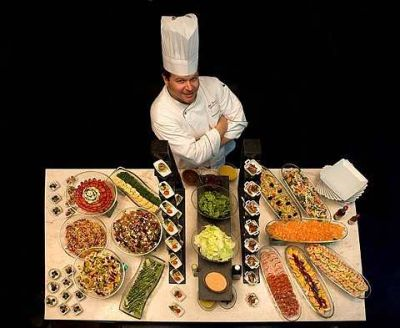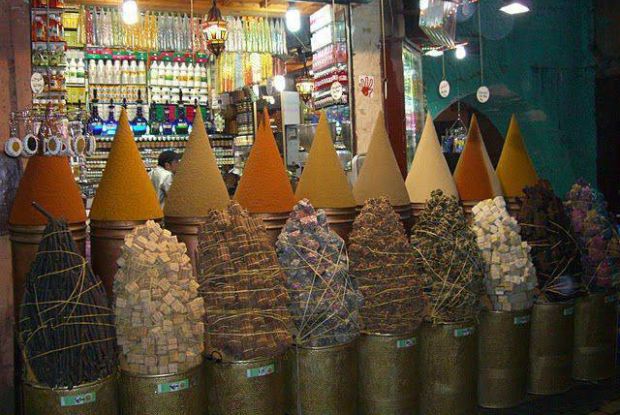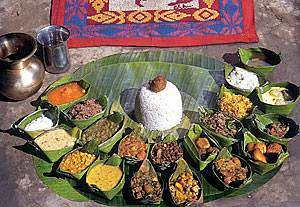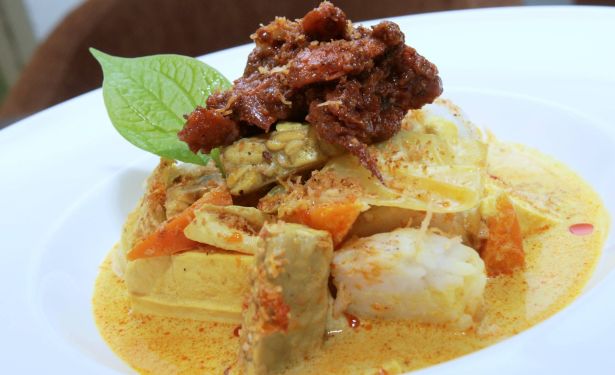Gastronomic tourism is the latest buzzword in the Indian travel scene.
AN explosion of colour, fragrance and taste, Indian cuisine invariably tops culinary charts as one of the world’s favourites. Its flavour-charged curries, spice-infused dishes and luminous sea produce cooked to perfection are a treat for any adventurous epicure.
To capitalise on the appeal of Indian food, many travel companies have launched “culinary trails” that take people to gourmet destinations across the country. These trips involve homestays, visit to organic farms, meetings with farmers, interactive cooking sessions with the locals and much more.
“Gastronomic tourism is largely about travelling to destinations where the local food and beverages are the main motivating factors for travel,” explains Serbjeet Singh of Hercules Travel & Tours, a New Delhi-based company that organises gourmet tours. “One of the best ways to enable tourists to get to know a country and its people better is through food.”
Cuisine, adds Singh, is a microcosmic reflection of a people’s culture, their farming traditions and social customs.
“All of this can be soaked in through food,” adds the expert. “More so because in India food is not merely a means of sustenance; culinary skills are respected as an art form.”
An official at Responsible Travel, an establishment which promotes eco-tourism, opines that food trips are catching on “because travellers are seeking more authentic and experiential holidays.”
According to Glenn Eastman, executive chef at the award-winning Leela Palace Kempinski, New Delhi, “Exploring Indian food is like undertaking a culinary voyage which enables one to discover each state’s hidden treasures. Culturally, a country’s food speaks volumes about its people, climates and natural resources.
“However, in India, it is more like reading an encyclopedia, full of chronicles about its rich culture, the Maharajas, British colonisation, independence and India’s climb towards becoming one of the world’s economic powerhouses. Everything is written in its food.”
Preeti Ghei, an IT consultant in Dubai – and a regular on gastronomic trips across India – says that unlike package tours which focus only on sightseeing, food travel binds together people in a common pursuit. Her favourite Indian foodie destinations?
“Kerala and Goa, of course,” beams the gourmand. “I’ve made friends for life on these trips.”
Industry experts explain that for first-time travellers to India, gourmet safaris make a perfect backdrop for learning more about traditions, people, ways of eating, local flavours, festivities and the history of places visited. And indeed there’s so much to savour in India.
From the desert state of Rajasthan to the backwaters of Kerala and the mountainous regions of Ladakh and the northeast, India offers a whole smorgasbord of culinary styles to choose from.
Tour operators also customise itineraries around festivals and weddings.
Cox and Kings’ Curry Spice Tour Of India, for instance, is a 22-day trip across India taking travellers to distinct gastronomic zones like Calcutta, Hyderabad, Delhi, Udaipur, Ahmedabad, Chennai, Thekkady, Kumarakom, Cochin and Goa.
Responsible Travel also offers interesting cooking and food tours across India like cooking holidays in Kerala, Indian wildlife and cuisine holidays, and Indian culture and food tours, to name a few. Similarly, The Blue Yonder, another travel company, emphasises offbeat travel destinations to explore local cuisine. CTS Horizons, a UK-based tour operator, has a fortnight trip that “takes in the sights and great cooking styles of India, from Rajasthan to Goa and Bombay”.
Cooking classes are also a favoured activity amongst foodie travellers. And it certainly helps that India’s broad culinary culture – with its influences of Persian, Middle Eastern, Central Asian and South-East Asian cuisines – appeals to people from many nationalities.
All tour operators include toothsome local food as a part of their proffered Indian journey. On offer, for instance, is cuisine from Delhi (basically tandoori), Rajpootana (from Rajasthan), Lucknow (kebabs and Dum Pukht or cooked in steam style), Gujarat (predominantly rich vegetarian cuisine), Bengal (fish, rice and sweet dishes), Goa (seafood and spicy coconut curries), Golconda (Hyderbadi biryani and rich curries) and Carnatic flavours (southern Chettinad and Malabari cuisine).
 Executive chef Glenn Eastman: ‘Exploring Indian food is more like reading an encyclopedia, full of chronicles about its rich culture, the Maharajas,British colonisation,independence and India’s climb towards becoming one of the world’s economic power houses. Everything is written in its food.’
Executive chef Glenn Eastman: ‘Exploring Indian food is more like reading an encyclopedia, full of chronicles about its rich culture, the Maharajas,British colonisation,independence and India’s climb towards becoming one of the world’s economic power houses. Everything is written in its food.’“Moreover, India itself is home to an eclectic mix of cultures that result in a mind-boggling variety of food traditions,” adds Eastman.
In the north, adds the chef, flat breads such as roti, puri, chapatti and paratha accompany tandoori or clay oven-baked dishes.
The vast coastal regions and the tropical climate of southern India, too, have local dishes that include dosas (thin rice crepes with savory filling), idli, rice and lentil cakes served with sambar or chutney. In fact, the southern city of Cochin was recently voted as the centre of Indian culinary tourism and a top travel destination in 2010.
“Food,” says Meeta Verma, 36, who has been on two culinary trips to India from Seattle, the United States, “opens up interesting windows to experience the world. For a true-blue foodie like me, trying out a destination’s regional cuisine is more enriching than checking out boring museums.”
Industry veterans say that culinary tourism is a fast-growing segment, and typically gastronomic tours are increasingly being combined with other activities such as cultural tours, cycling and walking to expand their range.
“Growth in this niche market is expected to be very strong over the next 5-10 years. But it’s still a relatively small niche, and volumes are tiny,” elaborates Vikram Bhatia, a Mumbai-based travel agent who has been organising gourmet tours to Kerala, Rajasthan and Goa for the past three years.
Bhatia offers gourmet trips to India’s southern-most state of Kerala which allow tourists to experience activities along River Nila. They are accompanied by local nature and culture interpreters and storytellers who fill them in on regional traditions, culture, folklore and lifestyles.
In some itineraries, papadam-making and coconut craft is also woven in.
Foodies can learn the fine art of making the famous Indian papadam – a crunchy savory – from local women who make their living out of these items. To up the fun quotient further, operators make sure guests are served their own papadam during mealtime!
Some itineraries also include teaching travellers about the multifarious uses of a coconut shell. A carpenter gives live demo of his innovative skills to morph the coconut “waste” into beautiful art!
Neeta Lal is a New Delhi-based senior journalist; neetalal@hotmail.com.
Other popular gourmet destinations
APART from India, there are many other iconic gourmet destinations around the world.
Malaysia, for instance, is synonymous with its succulent chicken satays. A trip to New York is considered incomplete without a bite of its toothsome pizzas. Similarly, Singapore’s chilli crab, China’s Peking duck, Japan’s sushi, Spain’s tapas, Mexico’s quesadilla, the Maori-cooked hangi in New Zealand and the Italian pasta occupy top honours in global gastronomy.
So the next time you’re travelling, and the foodie in you surfaces, keep your peepers peeled for these gorgeous gourmet destinations:
Olvera Street, Los Angeles, California
Piping-hot taquito in your hand, the carne asada on the grill, and the Mariachi band playing at the corner – the Olvera Street market in Los Angeles offers a gastronomic experience that is quintessentially Mexican, with the “x” pronounced like an “h”.
This block-long market is perhaps the best place in world to sample the complete palette of Mexican flavours.
Food and Antique Market, Isle-sur-la-Sorgue, France
Charming is the only way to describe it. Complete with working waterwheels, the tranquil green waters of the Sorgue bifurcate into five branches to create the islands of Isle-sur-la-Sorgue, a compact medieval town in Provence. Market day (Sunday) is a boisterous affair. Once you’ve gorged on piquant olives, wines, nutty breads and remarkably fresh fish, you must stop by the antique shops to see if you can discover that aged treasure of your dreams. Then finish the day in the shade of one of the plane trees that line the village’s many canals.
Mercat La Boqueria, Barcelona, Spain
The finest open-air market in a nation of great ones, Boqueria has hawked food since the Middle Ages. Regional chefs come here to choose from more than 50 varieties of fresh fish plucked daily from the Mediterranean Sea. Phenomenal seafood aside, this is also the place to stock up on vegetables, fruits, meat, poultry, wine, bread and spices.
Little India, Singapore
People flock from all over the world to try out the delicacies of this famed ethnic market run by the Indian community. The most ordered specialty here is undoubtedly the fish head curry, a uniquely South-East Asian dish. Though you don’t get to eat the head itself, there’s plenty of meat to be found inside the head which can hardly fit on your platter! No matter. Just roll up your sleeves and dig into this succulent and spicy fare!






